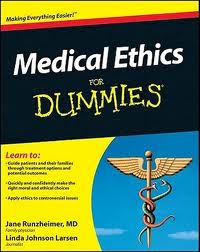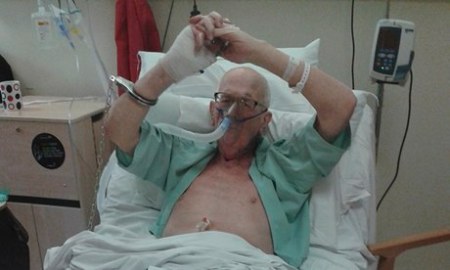Three former prison doctors recently called for an inquiry into prison medical services after the death of two inmates at the Otago prison. In September, the Southland Times expressed concerns about the high suicide rate in prison: Jail health and suicide inquiry demanded.  These stories follow allegations that the Corrections Department discourages prison doctors from prescribing pain killers and other essential medication, that it pushes doctors into breaching their medical ethics and operates a ‘minimum services dental policy’ leaving hundreds of prisoners in pain. On this blog, it has been argued that these policies constitute deliberate ‘negligence by government officials’ and are a form of pharmacological torture.
These stories follow allegations that the Corrections Department discourages prison doctors from prescribing pain killers and other essential medication, that it pushes doctors into breaching their medical ethics and operates a ‘minimum services dental policy’ leaving hundreds of prisoners in pain. On this blog, it has been argued that these policies constitute deliberate ‘negligence by government officials’ and are a form of pharmacological torture.
I have now discovered that at the core of this negligence, there is a major shortage of doctors and dentists in prison. This shortage pushes nurses into the role of gatekeepers – deciding who can and who can’t see the doctor.[i]
The United Nations Minimum Rules for prisoners
Theoretically, getting to see a doctor in prison should be easy. The United Nations Standard Minimum Rules for the Treatment of Prisoners state that:
“At every institution (i.e. Prison) there shall be available the services of at least one qualified medical officer…” and “The medical officer shall have the care of the physical and mental health of the prisoners and should daily see all sick prisoners, all who complain of illness, and any prisoner to whom his attention is specially directed.“
This rule is indirectly endorsed by Section 75 of the Corrections Act 2004 which states that prisoners are entitled to receive a standard of medical care which is “reasonably equivalent” to that which is available in the community. In a nutshell, these rules suggest that a medical officer (i.e. doctor) should be available to prisoners seven days a week – as is the case in the community where patients can visit their GP Monday to Friday and use an after hours’ service on the weekends.
To see whether Corrections is meetings its statutory obligations, I made an OIA asking how many hours a week doctors were on duty in each prison. I received a reply from Bronwyn Donaldson, Director of Offender Health, containing this chart which shows the number of hours that doctors are contracted to work at every prison in the country. It looks pretty much like this (below) except that it contains the figures for all 17 prisons:
| Prison | Doctor contracted hours | Number of doctors | No of prisoners |
| Auckland prison |
18 hours |
3 Part-time |
681 |
| Mt Eden |
28 hours |
3 Part-time |
996 |
| Springhill |
18 hours |
1 Part-time |
1050 |
| Hawkes Bay |
10 hours |
1 Part-time |
666 |
| Rimutaka |
28.5 hours |
4 Part-time |
942 |
| Christchurch |
24 hours |
2 Part-time |
926 |
| Otago |
10 hours |
2 Part-time |
485 |
| Invercargill |
2.5 hours |
1 Part-time |
180 |
The first thing to notice is that there is not a single prison in the country where a doctor is on duty for five days in the week, let alone seven. The greatest number of hours a doctor is available is 28 (or 3½ days) – at Rimutaka and Mt Eden – each of which has about 1,000 prisoners. The lowest number is 2½ hours a week – at Invercargill – which has 180 prisoners. No wonder prisoners complain that nurses often prevent them from seeing the doctor – most of the time there isn’t one on duty.
The ratio of doctors to prisoners
In order for there to be an ‘equivalent’ level of care in prison, the ratio of doctors to prisoners has to be similar to the ratio of doctors available to the general public. But Corrections doesn’t get anywhere near this. In 2010, there were 13,883 full-time general practitioners in New Zealand. This translates to 317 doctors per 100,000 of the population – or one doctor for every 315 people. In June 2013, the prison population was 8,597. The total number of hours worked in one week by all prison doctors combined is 229 – equivalent to 5.7 doctors working 40 hours a week. This represents an average (over all 17 prisons) of one doctor per 1505 prisoners. In other words, prison doctors have to service nearly five times as many patients as doctors in the community.
In some prisons, the ratio is even worse than that. Hawkes Bay prison holds 666 prisoners but has a doctor on duty for only 10 hours a week. That gives a (full-time) ratio of one doctor per 2,664 prisoners. Tongariro/Rangipo holds 540 prisoners but the Department has allocated a doctor for only seven hours a week. That gives a (full-time) ratio of one doctor per 3,085 prisoners.[ii] That doctor has to take care of nearly ten times as many patients as a doctor in the community.
The high health needs of prisoners

These are disturbing figures – but they represent only half the picture. This is because prisoners have much higher health needs than the general population. In the words of the National Health Committee: “A special case of health need exists in prison.” (iii) In support of this statement, the NHC reports that the lifetime prevalence of alcohol abuse and dependence among men in prison is twice that of men in the wider population. The lifetime prevalence of drug disorders is eight times higher. Historically, smoking rates among prisoners have been nearly three times higher for men and four times higher for women – although these figures may improve with the recent ban on cigarettes in prison.
The rate of heart disease among male prisoners is 3.3 times higher than males in the community while female prisoners have twice the rate of asthma compared with women in the community. Rates for hepatitis C among prisoners are also much higher – 8.1% for women and 5.8% for men compared with only 0.3% in the general population.
In regard to mental illness, the prevalence of schizophrenia among prisoners is more than three time the community rate; rates of post-traumatic stress disorder are four times higher for women and five times higher for men. Australian research suggests up to 30% of those in prison have intellectual disabilities and 50% are affected by a psychiatric disorder. The figures are likely to be similar in New Zealand.
How many doctors are required for equivalence?
In other words, prisoners have more medical problems, more complex problems, and a much greater need for medical services than the general populace. This means that providing the same doctor/patient ratio in prison as in the community would not actually provide an equivalent standard of care. In order to receive equivalent care, the prison population appears to need at least twice as many doctors per person.
The Royal New Zealand College of General Practitioners (which has been accused of sweeping prison suicides under the Cornerstone) believes that a ratio of one (full-time) doctor to 1000 patients “presents the best working environment for GPs”. At that level, prisoners might receive a standard of care which is superficially ‘equivalent’. Given the extraordinary high health needs of those in prison, the ratio would probably need to be one doctor per 500 prisoners before it could be called ‘reasonably equivalent’. In that case there would need to be 17 full time doctors available rather than the current 5.7.
Systemic breaches of the Crimes Act
In conclusion, it seems blatantly obvious that the Corrections Department is not providing anywhere near an equivalent level of care to prisoners and is therefore in breach of section 75 of the Corrections Act. Unfortunately, this doesn’t seem to be a crime. However, breaching section 151 of the Crimes Act is. The Crimes Act requires anyone who has vulnerable individuals in their care:
(a) to provide that person with necessaries; and
(b) to take reasonable steps to protect that person from injury.”
Basic medical care is absolutely necessary. Failing to employ sufficient doctors to provide this means health problems may be left unattended leading to unnecessary pain and suffering, sometimes with fatal consequences. The death of Jai Davis and suicide of Richard Barriball in the Otago prison two years ago are a direct result of the Department’s failure to provide medical necessaries. Although the police showed no interest at the time, after I made a formal complaint to the IPCA, the police finally began investigating these two deaths at the start of 2013. The investigation is on-going and no one in Corrections has yet been charged with a crime. Even if someone is, unless the Department doubles or trebles the number of doctors, prisoners will continue to die because of medical neglect.
Management at Corrections clearly don’t care. In her reply to my OIA, Bronwyn Donaldson, Director of Offender Health, said:
“I can advise that the Department has contracted sufficient hours for doctors to provide care to prisoners…the Department does not have any concerns about the hours currently worked in its prisons.”
[i] The difficulties prisoners experience accessing a prison doctor have been documented by the Ombudsman in his Investigation of the Department of Corrections in relation to the Provision, Access and Availability of Prisoner Health Services. The negative impact this has on the relationship between nurses and prisoners is described by Dr Michael Roguski in The Effects of Imprisonment on Inmates’ Health and Wellbeing.
[ii] The Ministry of Health says that when a doctor has more than 2000 patients, this is an ‘alert’ level indicating risk for the doctor as well as the patients.
[iii] Health in Justice, Improving the health of prisoners and their families and whānau, p 24-25.
Ever thought about taking a private prosecution against Corrections for breach(es) of the Crimes Act? That might wake their ideas up a bit.
LikeLike
The level of health care for all prisoners is abysmal. For some transgender prisoners there is a legislative provision specifically denying them treatment.
LikeLike
Good article. I am experiencing some of these issues as well..
LikeLike
Recognition of poor medical services in prison is glossed over by Corrections. Judges, until relatively recently, have been reluctant to openly concede this. The Ombudsman’s Report on prisons highlights inequality.
I’m involved, primarily, with transgender prisoners in my pro bono work. However, I’m interested in collecting information about deprivation of the medical care that can be expected on the outside. Last year, with the assistance of the Equal Justice Project, our TransAdvocates team successfully lobbied for a change in laws allowing transgender women who hadn’t had surgery to go to women’s prisons.
There are other issues this year which TransAdvocates wants to pursue regarding prison health care. We have represented individual clients in the past and continue to do so. However, we want to put our efforts into lobbying which, to date, has been very effective. If anyone wants to share information with me on whatever confidentiality basis they want, send me an email at ellis.law@xtra.co.nz.
Kelly Ellis
LikeLike
Nice blog thanks for pposting
LikeLike